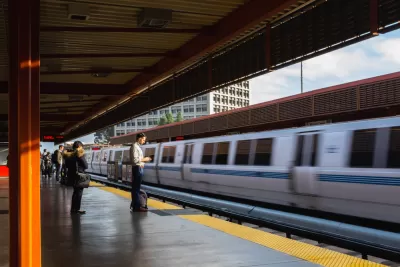A recent study by the Transit app reveals which communications methods are the most and least effective at reaching demographic groups representative of transit riders.

A new report by the Transit app examines the reach of communications channels—e.g., the Transit app, social media, emails, etc.—in reaching transit riders with critical information like service changes, fare payment, and mask mandates. The findings inspire a provocative headline for a blog post explaining the report's findings: "Transit Twitter isn't real life."
When communication channel reach is sorted by income and race in the United States, social media and public meetings fail the equity test of reaching representative populations of riders. Apps, signage, and customer support phone lines, it turns out, are more effective for reaching low-income riders and people of color.
For example, "social media is 3.5x more popular with high-income riders than low-income riders," according to the article. Twitter is the least representative of all: "High-income riders were 7.8x more likely to use Twitter for transit information than low-income riders and 2.1x more likely to use Instagram, whereas Facebook had a near-even split."
The communications findings are a component of the Transit app's larger quarterly Rider Happiness Benchmarking survey, which surveyed 21,000 transit riders across United States about their public transit experience.
A lot more detail on effective, equitable transit communications are included in the source article linked below.
FULL STORY: Transit Twitter isn’t real life

Alabama: Trump Terminates Settlements for Black Communities Harmed By Raw Sewage
Trump deemed the landmark civil rights agreement “illegal DEI and environmental justice policy.”

Study: Maui’s Plan to Convert Vacation Rentals to Long-Term Housing Could Cause Nearly $1 Billion Economic Loss
The plan would reduce visitor accommodation by 25% resulting in 1,900 jobs lost.

Planetizen Federal Action Tracker
A weekly monitor of how Trump’s orders and actions are impacting planners and planning in America.

Wind Energy on the Rise Despite Federal Policy Reversal
The Trump administration is revoking federal support for renewable energy, but demand for new projects continues unabated.

Passengers Flock to Caltrain After Electrification
The new electric trains are running faster and more reliably, leading to strong ridership growth on the Bay Area rail system.

Texas Churches Rally Behind ‘Yes in God’s Back Yard’ Legislation
Religious leaders want the state to reduce zoning regulations to streamline leasing church-owned land to housing developers.
Urban Design for Planners 1: Software Tools
This six-course series explores essential urban design concepts using open source software and equips planners with the tools they need to participate fully in the urban design process.
Planning for Universal Design
Learn the tools for implementing Universal Design in planning regulations.
Caltrans
Smith Gee Studio
Institute for Housing and Urban Development Studies (IHS)
City of Grandview
Harvard GSD Executive Education
Toledo-Lucas County Plan Commissions
Salt Lake City
NYU Wagner Graduate School of Public Service




























